Management Course Assignment: Prioritization, Strategy, and Feedback
VerifiedAdded on 2023/01/20
|5
|708
|53
Homework Assignment
AI Summary
This management assignment solution addresses key concepts in personal work priorities and professional development. It explores how team leaders and workgroups can align their goals with organizational strategic goals using company documents like strategic plans and vision/mission statements. The solution describes the Urgent/Important Time Management matrix, providing examples of its application in a workplace setting. It outlines the 7 strategies for effective time management, including focusing on high-value activities and minimizing interruptions. Furthermore, it discusses various methods of feedback used to improve performance in the workplace, such as positive reinforcement, performance evaluations, inviting input, and communicating expectations. This assignment provides a comprehensive overview of essential management principles and practical strategies.
1 out of 5
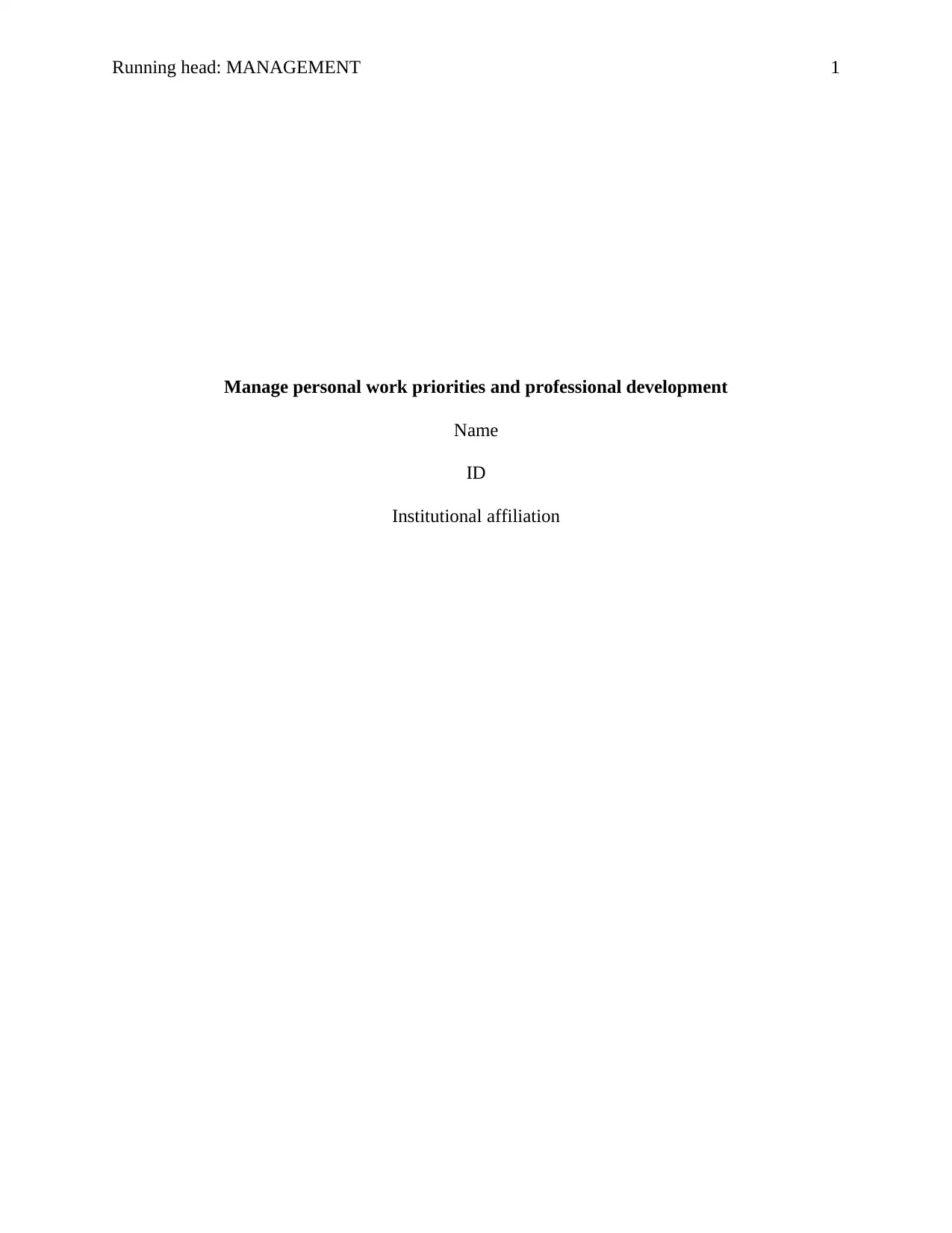
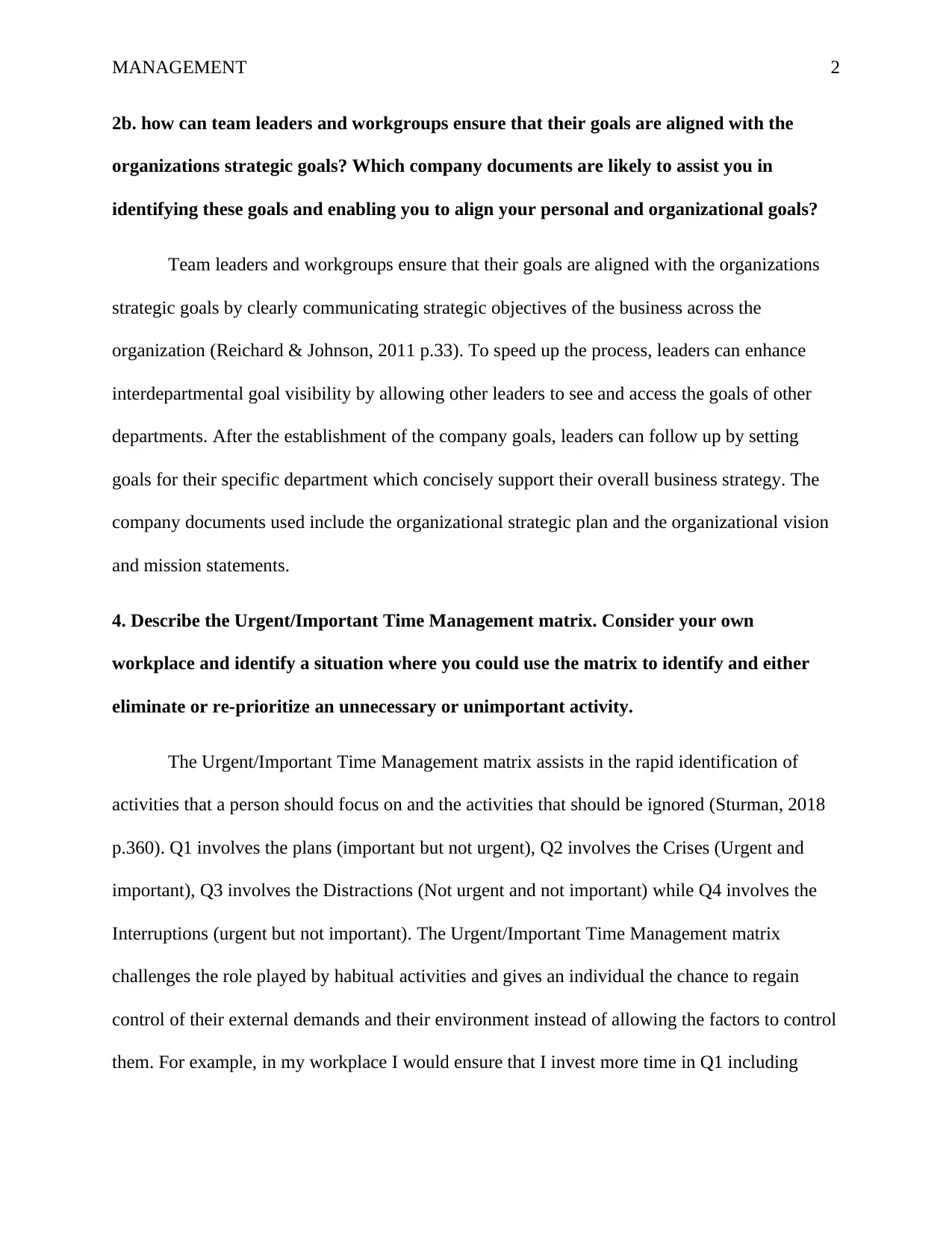
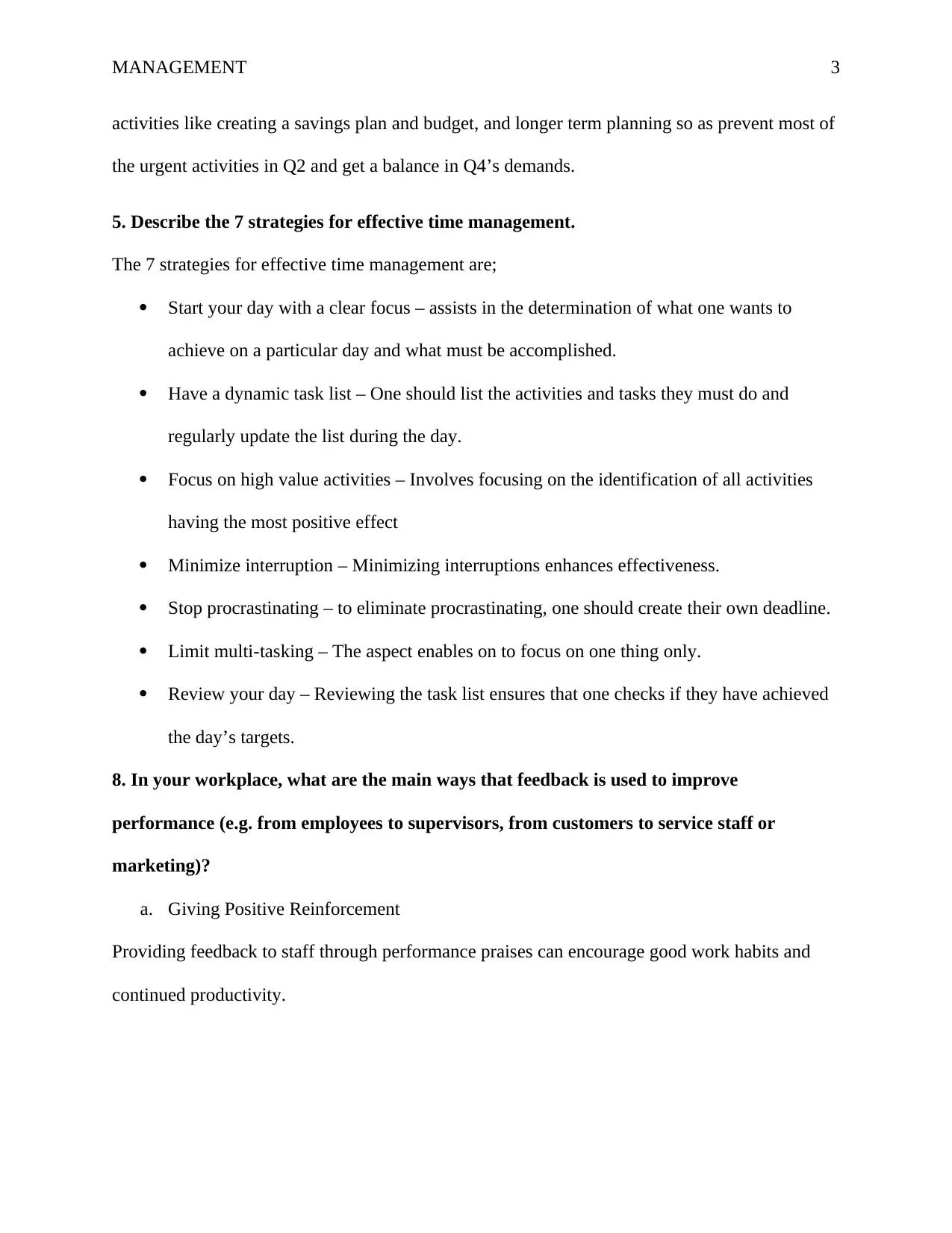

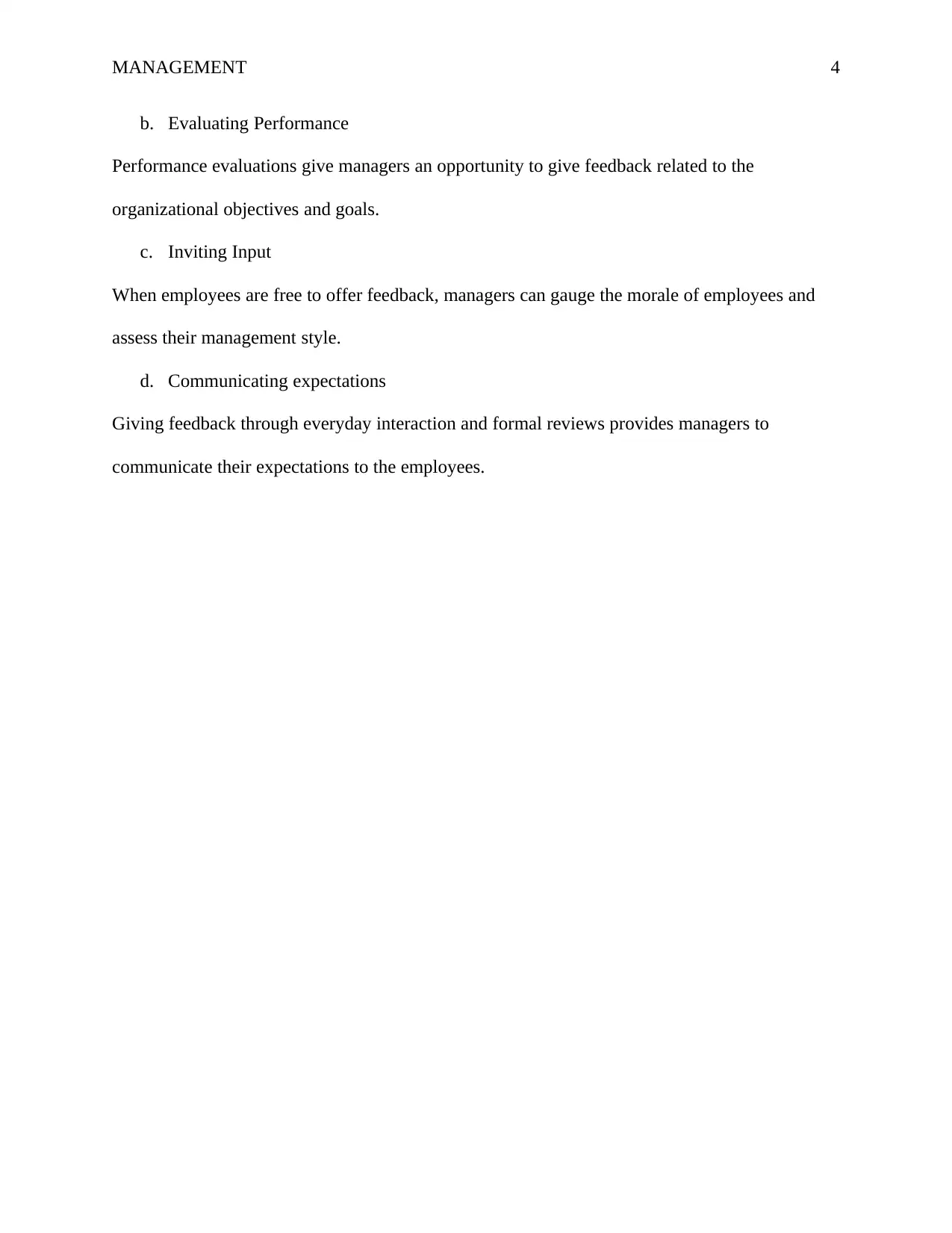
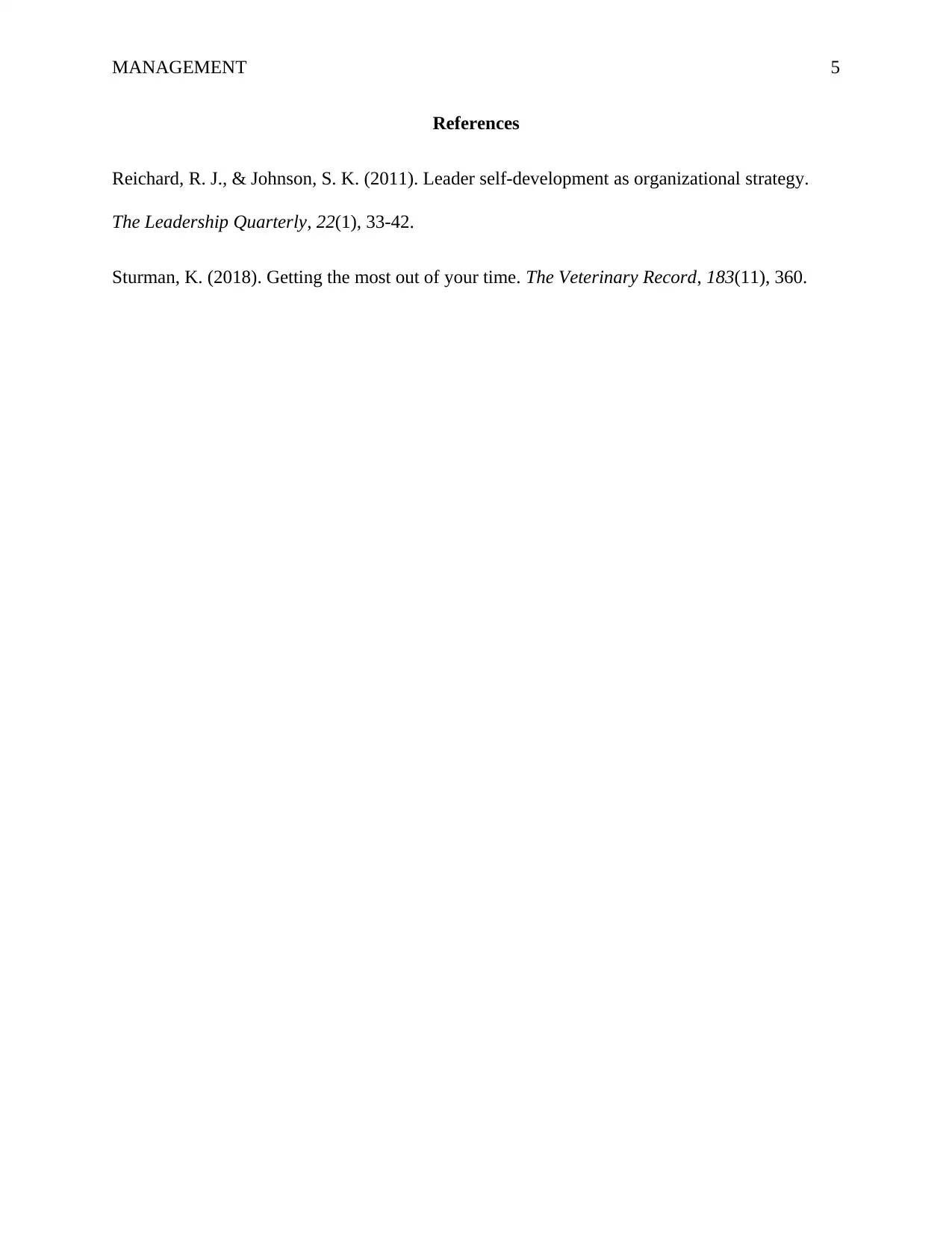






![[object Object]](/_next/static/media/star-bottom.7253800d.svg)